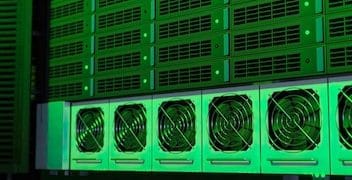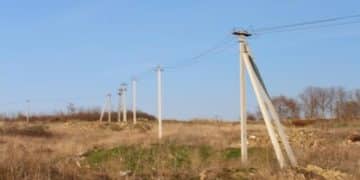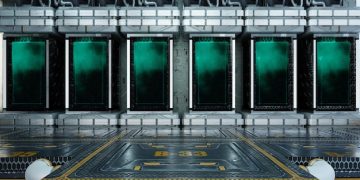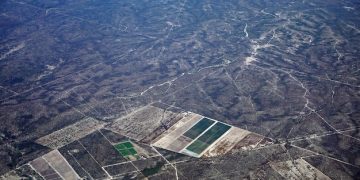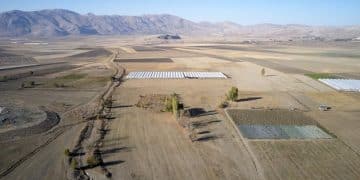How Grid Modernization Investments Boost US Energy Reliability and Efficiency
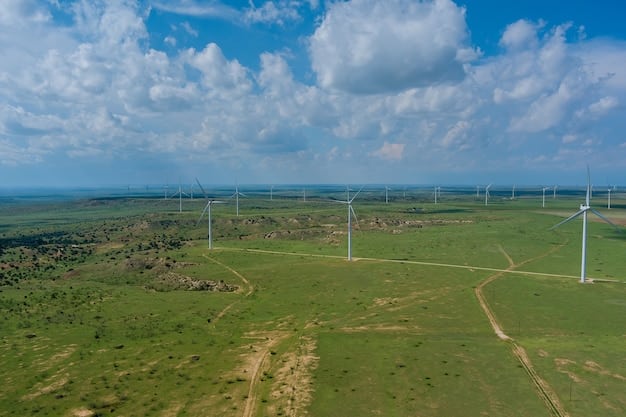
The US government’s investment in grid modernization aims to enhance the reliability and efficiency of the energy supply by upgrading infrastructure, integrating renewable energy sources, and improving cybersecurity, thereby reducing outages and lowering energy costs.
The **US government’s investment in grid modernization** is set to revolutionize the nation’s energy landscape. By enhancing infrastructure and integrating advanced technologies, these investments promise to bolster both the reliability and efficiency of the energy supply for American consumers and businesses alike.
Understanding grid modernization
Grid modernization refers to the process of upgrading and transforming the existing electrical grid infrastructure to incorporate advanced technologies, improve reliability, enhance efficiency, and enable greater integration of renewable energy sources. This involves deploying smart grid technologies, upgrading transmission and distribution systems, and enhancing cybersecurity measures.
The need for grid modernization stems from the aging infrastructure of the current grid, which is increasingly vulnerable to outages, disruptions, and cybersecurity threats. Additionally, the rise of renewable energy sources, such as solar and wind, requires a more flexible and resilient grid to accommodate their intermittent nature.
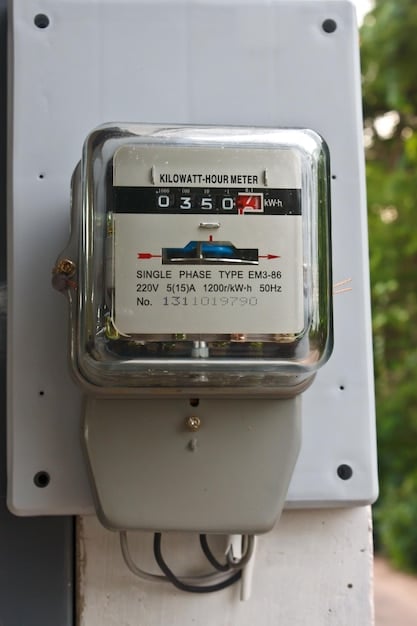
Key Components of Grid Modernization
Several key components are essential to the successful modernization of the US electrical grid. These include smart grid technologies, advanced metering infrastructure (AMI), and enhanced cybersecurity measures.
- Smart Grid Technologies: These include sensors, digital controls, and communication networks that enable real-time monitoring and optimization of the grid.
- Advanced Metering Infrastructure (AMI): AMI involves the deployment of smart meters that provide consumers with real-time information on their energy usage, enabling them to make more informed decisions about their energy consumption.
- Enhanced Cybersecurity Measures: Modernizing the grid also requires robust cybersecurity measures to protect against cyber threats and ensure the integrity and reliability of the energy supply.
Grid modernization efforts are crucial for ensuring a reliable, efficient, and secure energy supply for the future. By leveraging advanced technologies and upgrading infrastructure, the US can build a more resilient grid that can meet the evolving energy needs of the nation.
The impact on energy reliability
One of the primary goals of grid modernization is to enhance the reliability of the energy supply. By upgrading infrastructure and implementing advanced technologies, the grid can become more resilient to outages, disruptions, and extreme weather events.
Improved reliability translates to fewer and shorter power outages for homes and businesses, as well as reduced economic losses due to downtime. This is particularly important for critical infrastructure, such as hospitals, emergency services, and transportation systems, which rely on a continuous and uninterrupted power supply.
Reducing Outages and Downtime
Grid modernization initiatives play a critical role in reducing the frequency and duration of power outages. By deploying technologies such as smart grid sensors and automated switching systems, utilities can quickly detect and respond to faults, reroute power flow, and restore service to affected areas.
Additionally, grid modernization can improve the resilience of the grid to extreme weather events, such as hurricanes, floods, and heatwaves. Upgrading transmission and distribution infrastructure, burying power lines, and reinforcing poles can help to protect against damage from high winds, heavy rain, and ice storms.
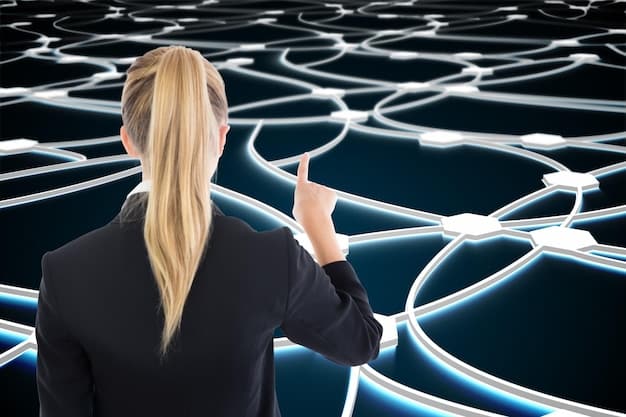
The Role of Smart Grid Technologies
Smart grid technologies are essential for enhancing the reliability of the energy supply. These technologies enable real-time monitoring and control of the grid, allowing utilities to quickly identify and respond to potential problems.
- Real-Time Monitoring: Smart grid sensors provide real-time data on grid conditions, such as voltage levels, power flow, and equipment status.
- Automated Switching Systems: Automated switching systems can automatically reroute power flow during a fault, minimizing the impact on customers.
- Predictive Analytics: Predictive analytics can be used to identify potential problems before they occur, allowing utilities to take proactive measures to prevent outages.
In summary, grid modernization is essential for ensuring a reliable energy supply. By reducing outages and downtime, improving resilience to extreme weather events, and leveraging smart grid technologies, the US can build a more dependable energy system.
Enhancing energy efficiency
In addition to improving reliability, grid modernization also aims to enhance energy efficiency. By reducing transmission losses, optimizing power flow, and promoting energy conservation, the grid can deliver electricity more efficiently, reducing waste and lowering costs for consumers.
Increased energy efficiency not only benefits consumers but also helps to reduce greenhouse gas emissions and mitigate climate change. By using less energy, the US can reduce its reliance on fossil fuels and transition to a cleaner, more sustainable energy future.
Reducing Transmission Losses
One of the key ways grid modernization can enhance energy efficiency is by reducing transmission losses. Transmission losses occur when electricity is lost as it travels through the grid, due to resistance in the wires and other factors. These losses can be significant, accounting for as much as 5-10% of total electricity generated.
By upgrading transmission infrastructure, optimizing power flow, and deploying advanced technologies such as high-voltage direct current (HVDC) transmission lines, utilities can reduce transmission losses and deliver electricity more efficiently. This can save consumers money on their energy bills and reduce the environmental impact of electricity generation.
Promoting Energy Conservation
Grid modernization can also help to promote energy conservation by providing consumers with real-time information on their energy usage. Smart meters and other advanced metering infrastructure (AMI) technologies enable consumers to track their energy consumption and identify opportunities to save energy.
- Real-Time Energy Usage Data: Smart meters provide consumers with real-time data on their energy usage, allowing them to see how much energy they are using and when.
- Energy Efficiency Programs: Utilities can use AMI data to develop targeted energy efficiency programs that help consumers save energy and money.
- Demand Response Programs: Demand response programs incentivize consumers to reduce their energy consumption during peak periods, helping to balance supply and demand and reduce the need for expensive and polluting peaker plants.
In conclusion, grid modernization plays a crucial role in enhancing energy efficiency. By reducing transmission losses, optimizing power flow, and promoting energy conservation, the US can build a more sustainable and affordable energy system for the future.
Integrating renewable energy sources
Another important aspect of grid modernization is the integration of renewable energy sources, such as solar and wind. As the US transitions to a cleaner energy future, it is essential that the grid be able to accommodate the growing share of renewable energy in the electricity mix.
Integrating renewable energy sources can be challenging due to their intermittent nature. Solar and wind power are dependent on weather conditions, which can fluctuate unpredictably. This can create challenges for grid operators, who must ensure that electricity supply and demand are always in balance.
Accommodating Intermittency
To accommodate the intermittency of renewable energy sources, grid modernization initiatives are focusing on several key strategies. These include:
- Energy Storage: Energy storage technologies, such as batteries and pumped hydro, can store excess renewable energy when it is available and release it when it is needed.
- Advanced Forecasting: Advanced forecasting techniques can be used to predict the output of solar and wind power plants, allowing grid operators to plan accordingly.
- Flexible Grid Operations: Flexible grid operations involve the use of advanced control systems and communication networks to manage the flow of electricity and balance supply and demand in real-time.
Modernizing the Grid for Renewables
Modernizing the grid to integrate renewable energy sources also requires upgrades to transmission and distribution infrastructure. This includes building new transmission lines to connect renewable energy generation sites to load centers, as well as upgrading substations and distribution systems to accommodate increased renewable energy penetration.
By investing in grid modernization and adopting innovative technologies, the US can successfully integrate renewable energy sources into the electricity mix and transition to a cleaner, more sustainable energy future. This will not only benefit the environment but also create new jobs and economic opportunities in the renewable energy sector.
Strengthening cybersecurity
As the grid becomes more digitized and interconnected, it also becomes more vulnerable to cyber threats. Strengthening cybersecurity is therefore a critical component of grid modernization. Cyber attacks on the grid could disrupt electricity supply, damage infrastructure, and compromise sensitive data.
Protecting the grid from cyber threats requires a multi-layered approach that includes:
- Advanced Threat Detection: Advanced threat detection systems can monitor grid networks for suspicious activity and alert operators to potential cyber attacks.
- Cybersecurity Training: Cybersecurity training for grid operators and other personnel is essential to ensure that they are aware of the risks and know how to respond to cyber attacks.
- Compliance with Security Standards: Compliance with industry cybersecurity standards, such as the North American Electric Reliability Corporation (NERC) Critical Infrastructure Protection (CIP) standards, is essential for ensuring that the grid is adequately protected.
Protecting Against Cyber Threats
In addition to these measures, grid modernization initiatives are also focusing on developing more resilient and secure grid architectures. This includes:
- Segmentation: Segmenting the grid into smaller, more manageable sections can limit the impact of a cyber attack.
- Redundancy: Redundancy in grid systems can ensure that critical functions can still be performed even if one system is compromised.
- Encryption: Encryption can protect sensitive data from being accessed by unauthorized parties.
Cybersecurity is an ongoing challenge, and grid operators must remain vigilant and proactive in their efforts to protect the grid from cyber threats. By investing in cybersecurity technology, training, and standards, the US can ensure that the grid remains secure and reliable in the face of evolving cyber threats.
Economic benefits
The US government’s investment in grid modernization is expected to generate significant economic benefits. These benefits include:
- Job Creation: Grid modernization projects will create new jobs in the construction, manufacturing, and technology sectors.
- Increased Economic Productivity: A more reliable and efficient energy supply will boost economic productivity by reducing downtime and lowering energy costs.
- Attracting Investment: A modern and reliable grid will attract investment in the US economy, particularly in energy-intensive industries.
Stimulating Economic Growth
Grid modernization can also stimulate economic growth by enabling the deployment of new technologies and business models. For example, smart meters and AMI technologies can enable utilities to offer new services, such as demand response programs and time-of-use pricing, which can save consumers money and reduce energy consumption.
Grid modernization can also facilitate the development of new energy storage technologies, which can help to balance supply and demand and enable greater penetration of renewable energy sources. This can create new economic opportunities in the energy storage sector.
In conclusion, the economic benefits of grid modernization are substantial. By creating jobs, boosting economic productivity, attracting investment, and stimulating technological innovation, grid modernization can help to build a stronger and more prosperous economy for the future.
| Key Point | Brief Description |
|---|---|
| 💡 Reliability | Reduces outages and improves response to weather. |
| ⚡ Efficiency | Minimizes transmission losses and promotes conservation. |
| 🌱 Renewables | Enables better integration of solar and wind energy. |
| 🛡️ Cybersecurity | Protects the grid from cyber threats and disruptions. |
Frequently Asked Questions
▼
Grid modernization involves upgrading the existing electrical grid with advanced technologies to improve reliability, efficiency, and security. This includes smart grids, advanced metering, and enhanced cybersecurity.
▼
By deploying smart grid sensors and automated switching systems, utilities can quickly detect and respond to faults, reroute power flow, and restore service to affected areas efficiently.
▼
Smart meters provide consumers with real-time data on their energy usage, allowing them to make informed decisions about energy consumption and participate in energy efficiency programs.
▼
Grid modernization supports renewable energy by enabling better integration of solar and wind power through energy storage solutions and advanced forecasting techniques for intermittent sources.
▼
Cybersecurity is crucial because a modern grid is more digitized and interconnected, making it vulnerable to cyber threats. Strengthening cybersecurity protects against disruptions and data breaches.
Conclusion
In conclusion, the US government’s investment in grid modernization is a crucial step towards a more reliable, efficient, and sustainable energy future. By upgrading infrastructure, integrating renewable energy sources, and strengthening cybersecurity, these investments will bring significant benefits to American consumers, businesses, and the environment.
